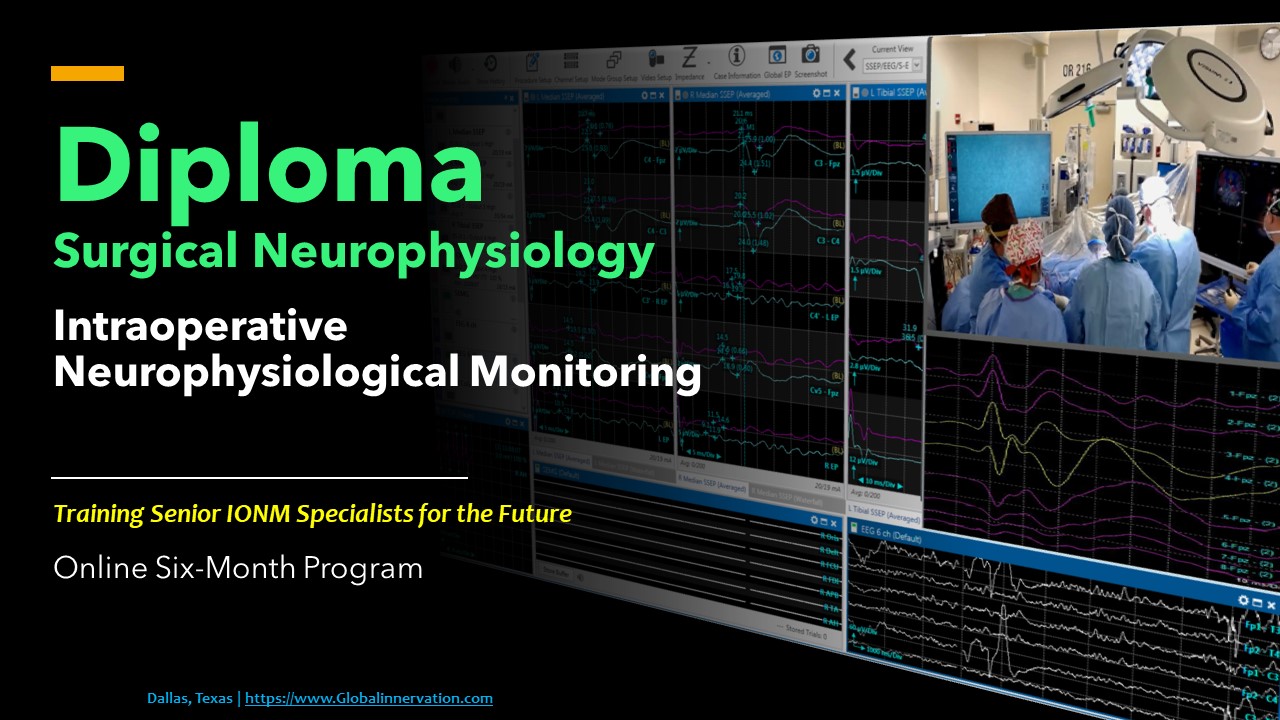Cochlear Implantation and Intraoperative Neurophysiological Monitoring of the Facial Nerve
DOI:
https://doi.org/10.5281/zenodo.10205916Keywords:
CochlearAbstract
Cochlear implants (CI) provide significant benefits to patients. Given these benefits and the increasing number of CI surgeries, great care should be taken to prevent facial nerve injury. Intraoperative neurophysiological monitoring (IONM) of the facial nerve during CI surgery can greatly benefit the surgeon when combined with a thorough history and physical and appropriate pre-operative imaging. In this case, we review the pre-operative and intraoperative considerations of CI surgery and the implications of using IONM for facial nerve monitoring.
Preoperative considerations include appropriate workup, including a thorough history and physical examination with special care for audiometric history, evaluation, and preoperative imaging. Intraoperatively, special consideration should be given to IONM of the facial nerve while drilling over the facial recess. Care should be taken about specific anatomical considerations based on preoperative imaging.
IONM of the facial nerve during CI surgery can significantly help the surgeon. While rates of facial nerve injury are low in incidence during CI surgery, IONM can be especially useful in cases of variant anatomy, younger patients, congenital malformations, or revision surgeries. It is a cheap and cost-effective way to safeguard the facial nerve and should be considered during all CI surgeries.
Cochlear implantation can have tremendous benefits for patients, but the potential risks of facial nerve injury can be devastating. IONM of the facial nerve during CI surgery can help prevent such injury and do so in a cost-effective and time-efficient manner.
References
McRackan TR, Bauschard M, Hatch JL, et al. Meta-analysis of quality-of-life improvement after cochlear implantation and associations with speech recognition abilities. Laryngoscope. 2018;128(4):982-990. doi:10.1002/lary.26738
Hsieh HS, Wu CM, Zhuo MY, Yang CH, Hwang CF. Intraoperative Facial Nerve Monitoring During Cochlear Implant Surgery. Medicine (Baltimore). 2015;94(4):e456. doi:10.1097/MD.0000000000000456
Heman-Ackah SE, Gupta S, Lalwani AK. Is facial nerve integrity monitoring of value in chronic ear surgery? The Laryngoscope. 2013;123(1):2-3. doi:10.1002/lary.23363
Harper CM, Daube JR. Facial nerve electromyography and other cranial nerve monitoring. J Clin Neurophysiol. 1998;15(3):206-216. doi:10.1097/00004691-199805000-00004
Cochlear Implantation | Iowa Head and Neck Protocols. Accessed September 12, 2023. https://medicine.uiowa.edu/iowaprotocols/cochlear-implantation
House JR, Luxford WM. Facial nerve injury in cochlear implantation. Otolaryngol Head Neck Surg. 1993;109(6):1078-1082. doi:10.1177/019459989310900618
Olds MJ, Rowan PT, Isaacson JE, Silverstein H. Facial nerve monitoring among graduates of the Ear Research Foundation. Am J Otol. 1997;18(4):507-511.
Fayad JN, Wanna GB, Micheletto JN, Parisier SC. Facial nerve paralysis following cochlear implant surgery. Laryngoscope. 2003;113(8):1344-1346. doi:10.1097/00005537-200308000-00014
Thom JJ, Carlson ML, Olson MD, et al. The prevalence and clinical course of facial nerve paresis following cochlear implant surgery. Laryngoscope. 2013;123(4):1000-1004. doi:10.1002/lary.23316.
Downloads
Published
How to Cite
Issue
Section
License
Copyright (c) 2023 J of Neurophysiological Monitoring

This work is licensed under a Creative Commons Attribution 4.0 International License.





